Patoli or Patolyo are rice dumplings stuffed with sweet coconut, cardamom and jaggery and wrapped with fresh turmeric leaves and steamed. Get the patoli video recipe too.
Patoleo or patoli or patolyo are coconut and rice flour dumplings steamed in turmeric leaves. This is a traditional Goan food normally made on special occasions like Shravan Sunday, Nagpanchami, Tay/Hartalika day during Ganesh Chaturthi by the Goan Hindus and on 15 August for the feast of assumption of Mother Mary and Sao Joao festival by the Goan Christians.
Whenever we prepare pattoleo, we do a teamwork. My hubby and my daughter spread the rice flour dough on the turmeric leaves. I add grated coconut mixture, seal and steam. It’s fun to eat this special Goan dessert together.
Shravan is an auspicious month in India which comes during mid or beginning of August. As soon as the monsoons start, you see everything green around. You see life everywhere and new things start growing. This is the time when turmeric leaves also grow in abundance.
Related posts: Puran poli, Modak, Nevri
The smell of turmeric leaves while the patolli with rice flour get steamed is divine. The flavour of turmeric leaves gets seeped into the rice flour while steaming and enhances the taste of patoli. Hence there is no other alternative to turmeric leaves for making patoli.
If turmeric leaves are not available, you can make patolli in jackfruit leaves or banana leaf, but the taste will be no where close to making patoleo in turmeric leaves.
Ingredients to make patoleo recipe:
- Turmeric leaves: Fresh turmeric leaves are the star ingredient in making authentic patolli. There is no alternative to fresh turmeric leaves. You can make patolyo with jackfruit leaves, but taste will be compromised.
- Rice flour: Rice flour paste is applied to on the turmeric leaf before adding the coconut stuffing.
Coconut: Freshly grated coconut should be used in making these Goan patolyo. - Jaggery: Traditionally palm jaggery is used in making patolli. You can use sugarcane jaggery if palm jaggery is not available. I have used sugarcane jaggery in making this recipe.
- Cardamom pods: Cardamom pods adds earthy flavour to the recipe. Since it is made on a festive occasion, a cardamom pod is a must.
How to make Goan patolli?
- Heat a kadai, add grated coconut, grated jaggery, crushed cardamom pods and salt. Stir for 2-3 minutes till coconut and jaggery gets mixed. Switch off the gas. Let it cool.
Now let us start making the pattoleo or patolyo:
- Keep a container filled with 1 cup water handy to dip the fingertips when they get sticky.
- Place the turmeric leaf on a plate. On the smooth inside part of the leaf, spread 2 tablespoon of rice flour dough. Whenever the fingers get sticky with dough, just dip them in water and spread the dough. This helps in spreading the dough smoothly. Leave some space near the edges of the leaf, this will help in sealing the pattolyo.
- Over this spread 1 teaspoon of grated coconut and jaggery mixture. If leaves are too big, you may need to add more mixture. Do not add too much of coconut jaggery mixture as you will not be able to close and seal properly. Do not worry if the edges remain slightly open too. Our goal is to steam the dumplings.
- Close the pattoleo by bringing the edges together, just like how we close an open. Apply slight pressure after closing it. You may also close it vertically too.
- If the patolyo are big, cut them in halves.
- Steam them in a steamer for 20 minutes.
Take time to smell the divine fragrance of steaming turmeric leaves.
Another way to make patolli:
I have made these sweet rice flour dumplings using rice flour. Some people soak rice overnight, grind it next day and then follow the same process. Some people also make patoleo with wheat flour.
You might be interested in steamed vegetable momos recipe. Check it out.
How to serve patoleo?
Serve the patoleo, steaming hot with turmeric leaves on. Peel the leaf and eat the cooked rice flour dumpling. It can be served as desserts after lunch or evening snacks with a cup of tea.
Patoli | Patoleo
Equipment
- steamer
- Kadai
Ingredients
- 15 turmeric leaves
- 1 cup rice flour
- 2 cups water
- ¼ teaspoon salt
- 2 cups freshly grated coconut
- 5 cardamom pods peeled and crushed
- ¾ cup grated jaggery
- To taste salt
Instructions
- Boil the water. After boiling, add the rice flour and salt in parts and mix well with a spoon. After it absorbs all water, switch off the gas and let it cool.
- After cooling down a bit, take the dough on a plate and mix well.
- Wash the turmeric leaves and pat them dry.
- Heat a kadai, add grated coconut, grated jaggery, crushed cardamom pods and salt. Stir for 2-3 minutes till coconut and jaggery gets mixed. Switch off the gas. Let it cool.
- Now let us start making the pattoleo or patolyo.
- Keep a container filled with 1 cup water handy to dip the fingertips when they get sticky.
- Place the turmeric leaf on a plate. On the smooth inside part of the leaf, spread 2 tablespoon of rice flour dough. Whenever the fingers get sticky with dough, just dip them in water and spread the dough. This helps in spreading the dough smoothly. Leave some space near the edges of the leaf, this will help in sealing the pattolyo.
- Over this spread 1 teaspoon of grated coconut and jaggery mixture. If leaves are too big, you may need to add more mixture. Do not add too much of coconut jaggery mixture as you will not be able to close and seal properly. Do not worry if the edges remain slightly open too. Our goal is to steam the dumplings.
- Close the pattoleo by bringing the edges together, just like how we close an open. Apply slight pressure after closing it. You may also close it vertically too.
- If the patolyo are big, cut them in halves.
- Steam them in a steamer for 20 Minutes.
- Take time to smell the divine fragrance of steaming turmeric leaves.
- Enjoy these pattolyo steaming hot.
Video
Notes
- If the patolyo are big, cut them in halves.
- Keep a bowl of water ready while making patoleo, you will need to dip fingertips while spreading the dough.
- Do not worry if the edges remain slightly open too. Our goal is to steam the dumplings.
Follow us on Facebook, Twitter, Instagram and Pinterest. Pin this image on Pinterest.
If you like the recipe, please comment and give us a 5 star rating.
Note: Recipe was published on 24th Aug 2016 and is republished. This post might contain affiliate links.

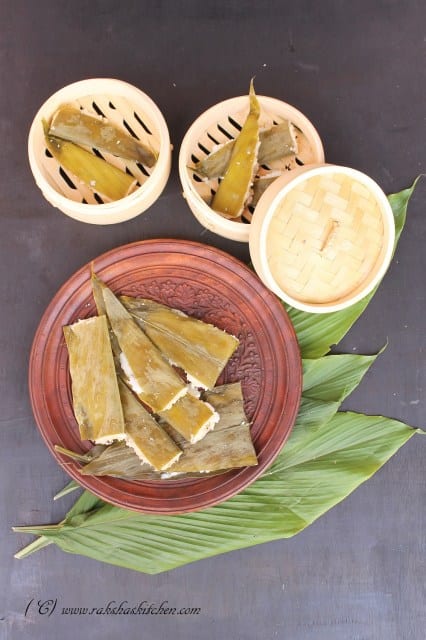
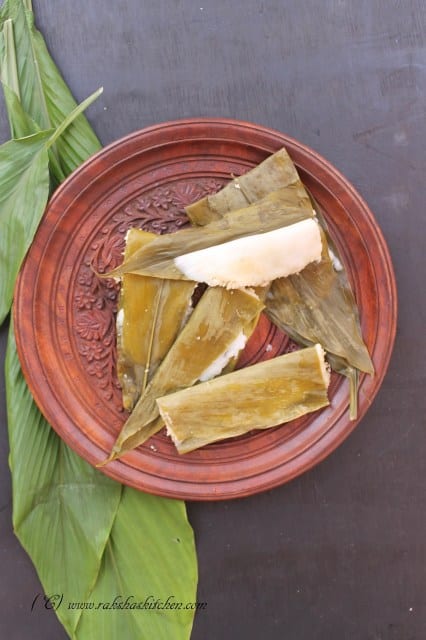
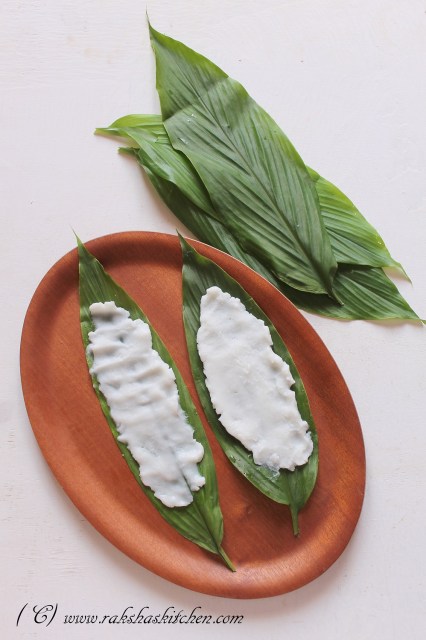
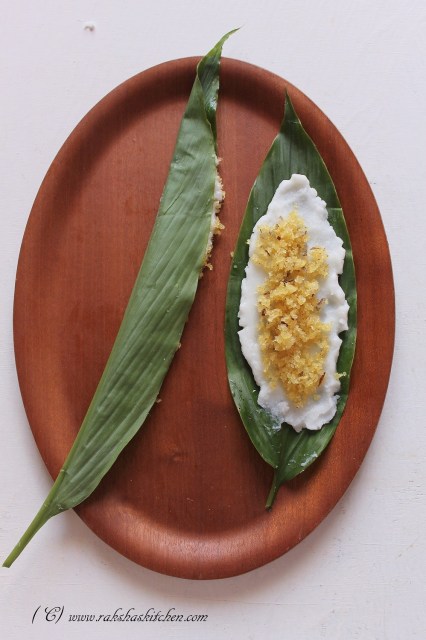
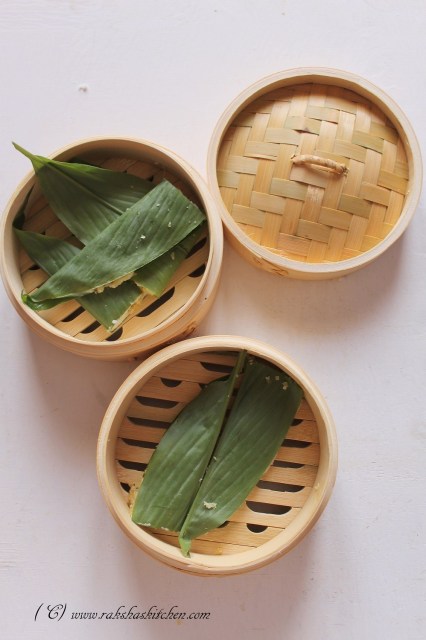
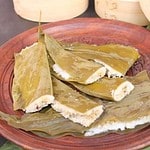
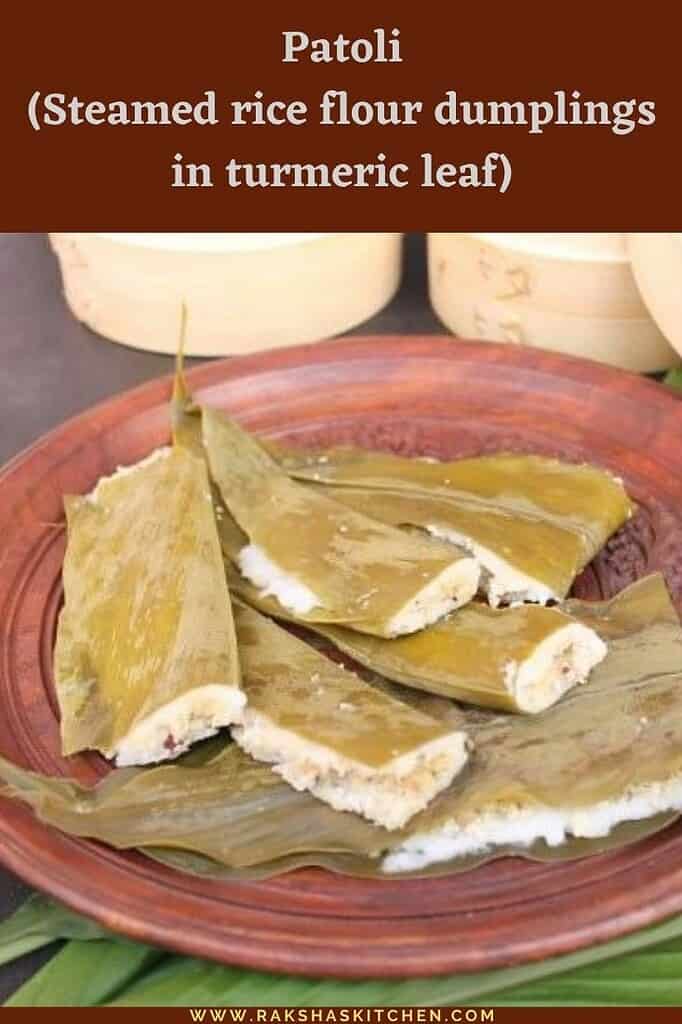

Leave a Reply